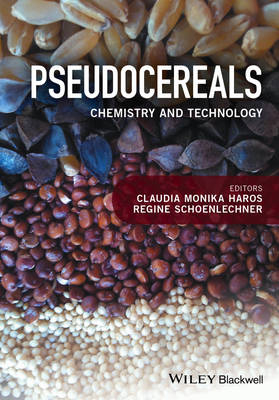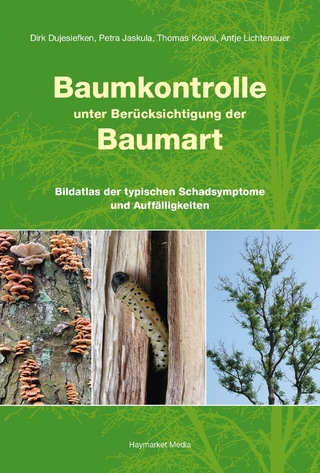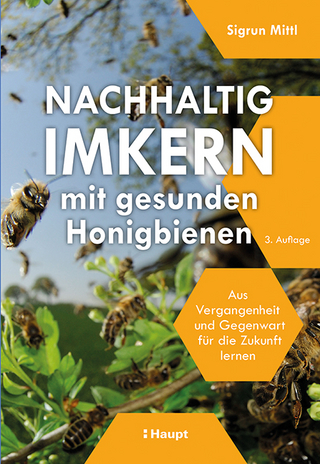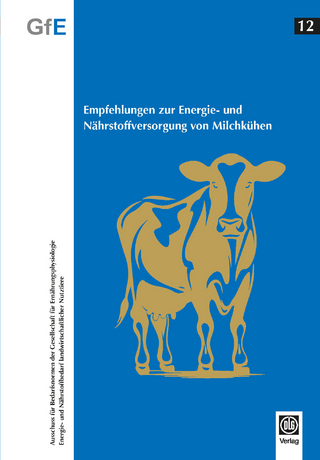
Pseudocereals
Wiley-Blackwell (Verlag)
978-1-118-93828-7 (ISBN)
- Titel z.Zt. nicht lieferbar
- Versandkostenfrei innerhalb Deutschlands
- Auch auf Rechnung
- Verfügbarkeit in der Filiale vor Ort prüfen
- Artikel merken
At present there is some confusion surrounding the term ‘pseudocereals’ and what it does and does not include, for example kiwicha which is Amaranthus caudatus or kaniwa which is Chenopodium pallidicaule. Sometimes other grains are included in the pseudocereal group like chia (Salvia hispanica L), an oleaginous seed. One of the aims of the book is to clear up some of the confusion over what is included in the group of pseudocereals.
The book will include: the origin, production and utilization of pseudocereals; structure and composition of kernels; carbohydrates/fibre/bioactive compounds of kernels; proteins and amino acids of kernels; lipids of kernels; pseudocereal dry and wet milling: processes, products and applications; food uses of whole pseudocereals; pseudocereals in gluten free products; and the nutritional and health implications of pseudocereal intake.
Claudia Monika Haros, Institute of Agrochemistry and Food Technology (IATA), Spanish Council for Scientific Research (CSIC), Valencia, Spain. Regine Schoenlechner, University of Natural Resources and Life Sciences, Department of Food Science and Technology, Vienna, Austria.
List of Contributors xi
Preface xiii
1 Origin, Production and Utilization of Pseudocereals 1
Amanda Di Fabio and Gloria Parraga
1.1 Quinoa – Chenopodium quinoa Willd (Amaranthaceae) 1
1.1.1 Introduction 1
1.1.2 Origin and History 1
1.1.3 Botanical Characteristics / Species / Varieties 3
1.1.3.1 Species / Varieties 3
1.1.3.2 Botanical Description 3
1.1.4 Cultivation 5
1.1.4.1 Growth and Development 5
1.1.4.2 Climatic Requirements 6
1.1.4.3 Soil and Crop Management 6
1.1.4.4 Diseases 8
1.1.5 World Production of Quinoa 10
1.2 Amaranth – Amaranthus hypochondriacus L., Amaranthus cruentus L., and Amaranthus caudatus L. (Amaranthaceae) 11
1.2.1 Introduction 11
1.2.2 Origin and History 11
1.2.3 Botanical Characteristics / Species / Varieties 12
1.2.4 Cultivation 13
1.2.4.1 Growth and Development 13
1.2.4.2 Climatic Requirements 15
1.2.4.3 Soil and Crop Management 16
1.2.4.4 Diseases 17
1.2.5 World Production of Amaranth 17
1.3 Buckwheat – Fagopyrum esculentum Moench 17
1.3.1 Introduction 17
1.3.2 Origin and History 18
1.3.3 Botanical Characteristics / Species / Varieties 18
1.3.4 Pseudocereal Culture 19
1.3.4.1 Growth and Development 19
1.3.4.2 Climatic Requirements 19
1.3.4.3 Soil and Crop Management 19
1.3.4.4 Diseases and Pests 23
1.3.5 World Production of Buckwheat 23
Acknowledgements 24
References 24
2 Structure and Composition of Kernels 28
María Reguera and Claudia Monika Haros
2.1 Introduction 28
2.2 Gross Structural Features 28
2.3 Physical Properties 30
2.4 Kernel Structures 33
2.5 Chemical Composition of Kernels 37
2.5.1 Proteins 37
2.5.2 Carbohydrates 38
2.5.3 Lipids 39
2.5.4 Minerals 39
2.5.5 Vitamins 40
2.5.6 Bioactive Compounds 40
2.5.7 Antinutritional Factors 41
2.5.7.1 Saponins 41
2.5.7.2 Phytic Acid 42
2.5.7.3 Protease Inhibitors 42
2.5.7.4 Oxalates 43
2.6 Conclusions 43
Acknowledgements 43
References 43
3 Carbohydrates of Kernels 49
Ritva Repo-Carrasco-Valencia and Jenny Valdez Arana
3.1 Introduction 49
3.2 Simple Carbohydrates and Oligosaccharides in Quinoa, Kañiwa, Amaranth and Buckwheat 50
3.3 Complex Carbohydrates / Starch / Nonstarch Polysaccharides 53
3.3.1 Quinoa and Kañiwa 53
3.3.2 Amaranth 59
3.3.3 Buckwheat 62
3.4 Conclusion 64
References 65
4 Dietary Fibre and Bioactive Compounds of Kernels 71
Ritva Repo-Carrasco-Valencia
4.1 Introduction 71
4.2 Dietary Fibre 71
4.2.1 Dietary Fibre in Andean Grains 72
4.2.2 Dietary Fibre in Buckwheat 76
4.3 Bioactive Compounds 77
4.3.1 Bioactive Compounds in Amaranth 77
4.3.2 Bioactive Compounds in Quinoa and Kañiwa 79
4.3.3 Bioactive Compounds in Buckwheat 84
4.4 Conclusions 86
References 87
5 Proteins and Amino Acids of Kernels 94
Stefano D’Amico, Regine Schoenlechner, Sandor Tömösköszi and Bernadett Langó
5.1 Introduction 94
5.2 Amaranth 94
5.2.1 Storage Proteins 94
5.2.2 Amino Acids 96
5.2.3 Nutritional Quality 97
5.2.4 Allergy and Coeliac Disease 98
5.2.5 Functional Properties of Proteins 99
5.2.6 Enzyme Inhibitors 100
5.3 Quinoa 100
5.3.1 Storage Proteins 100
5.3.2 Amino Acids 103
5.3.3 Nutritional Quality 103
5.3.4 Allergy and Coeliac Disease 105
5.3.5 Functional Properties of Proteins 106
5.4 Buckwheat 106
5.4.1 Protein Content 106
5.4.2 Amino Acid Composition 106
5.4.3 Protein Composition 108
5.4.4 Allergy 109
5.5 Conclusion 110
References 110
6 Lipids of Kernels 119
Silvia Valencia-Chamorro, Pedro Maldonado-Alvarado and Cristina Sotomayor-Grijalva
6.1 Introduction 119
6.2 Oil Content 119
6.2.1 Oil Content of Quinoa, Amaranth and Buckwheat 120
6.2.2 Lipid Analysis 121
6.2.3 Factors Influencing Oil Content of Quinoa, Amaranth and Buckwheat 121
6.3 Fatty Acid Composition 123
6.3.1 Fatty Acid Composition of Quinoa, Amaranth and Buckwheat 123
6.3.2 Saturated Fatty Acids 125
6.3.3 Unsaturated Fatty Acids 125
6.3.4 Properties of Fatty Acids 126
6.4 Lipid Class Composition 127
6.4.1 Neutral Lipids (Glycerides) in Quinoa, Amaranth and Buckwheat 127
6.4.2 Polar Lipids (Phospholipids) in Quinoa, Amaranth and Buckwheat 128
6.5 Distribution of Lipids in the Kernels 129
6.5.1 Distribution of Fatty Acids (Bran and Hull, Germ, Endosperm) 131
6.5.2 Distribution of Lipid Class (Bran and Hull, Germ, Endosperm) 131
6.6 Other Relevant Compounds in Pseudocereal Oils 132
6.6.1 Tocopherols 132
6.6.2 Squalene 133
6.7 Conclusions 133
References 134
7 Pseudocereal Dry and Wet Milling: Processes, Products and Applications 140
Claudia Monika Haros and Małgorzata Wronkowska
7.1 Introduction 140
7.2 Separation of Kernel Components 141
7.2.1 Dry Milling 142
7.2.2 Wet Milling 145
7.2.2.1 General Description of the Industrial Wet Milling Process 146
7.2.2.2 Amaranth 149
7.2.2.3 Quinoa 150
7.2.2.4 Buckwheat 153
7.3 Industrial Applications and General Food Uses 153
7.4 Conclusion 157
Acknowledgements 157
References 157
8 Food Uses of Whole Pseudocereals 163
Claudia Monika Haros and Juan Mario Sanz-Penella
8.1 Introduction 163
8.2 Bakery Products 166
8.2.1 Bread 166
8.2.2 Biscuits, Cookies and Cakes 175
8.2.3 Others 177
8.3 Snacks and Breakfast Cereals 178
8.4 Beverages / Drinks 179
8.5 The Most Popular Traditional Foods 180
8.6 Pasta Products 181
8.7 Infant Food 182
8.8 Others 183
8.9 Conclusion 183
Acknowledgments 183
References 184
9 Pseudocereals in Gluten-Free Products 193
Regine Schoenlechner
9.1 Introduction 193
9.1.1 Gluten-Related Disorders – Coeliac Disease and Gluten Sensitivity 194
9.2 The Gluten-Free Diet and General Aspects of Gluten-Free Processing 195
9.2.1 Definition of ‘Gluten Free’ 195
9.2.2 Gluten-Free Processing – General Aspects 196
9.3 Potential of Pseudocereals for Gluten-Free Processing 198
9.4 Gluten-Free Bread Baking with Pseudocereals 199
9.5 Use of Pseudocereals in Pasta 203
9.6 Other Products 206
9.6.1 Cookies and Biscuits 206
9.6.2 Snack Products – Granolas and Breakfast Cereals 207
9.6.3 Beverages and Beer 208
9.7 Market Today 209
9.8 Conclusion 210
References 211
10 Nutritional and Health Implications of Pseudocereal Intake 217
Juan Antonio Giménez-Bastida, Swaantje Hamdi and José Moisés Laparra Llopis
10.1 Introduction 217
10.2 Pseudocereals in Allergy and Coeliac Disease 218
10.3 Prebiotic Effect of Pseudocereals 220
10.4 Potential of Pseudocereals in Type-2 Diabetes: Glycaemic Index (GI) 221
10.5 Micronutrient Availability 222
10.6 Hypocholesterolemic Properties 223
10.7 Antioxidant Activity of Pseudocereals 224
10.8 Potential of Pseudocereals against Cancer 224
10.9 Conclusions 226
References 226
Index 233
| Erscheinungsdatum | 04.02.2017 |
|---|---|
| Verlagsort | Hoboken |
| Sprache | englisch |
| Maße | 170 x 244 mm |
| Gewicht | 567 g |
| Themenwelt | Technik |
| Weitere Fachgebiete ► Land- / Forstwirtschaft / Fischerei | |
| ISBN-10 | 1-118-93828-3 / 1118938283 |
| ISBN-13 | 978-1-118-93828-7 / 9781118938287 |
| Zustand | Neuware |
| Haben Sie eine Frage zum Produkt? |
aus dem Bereich


